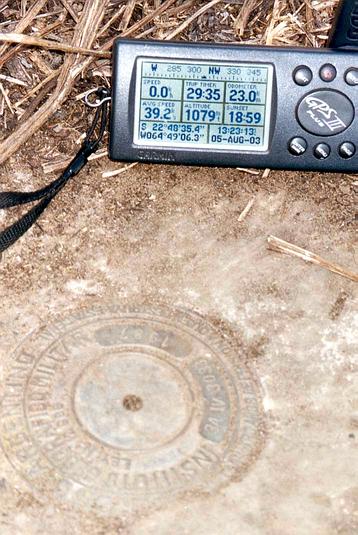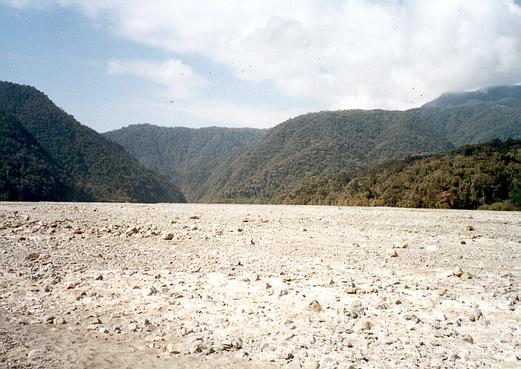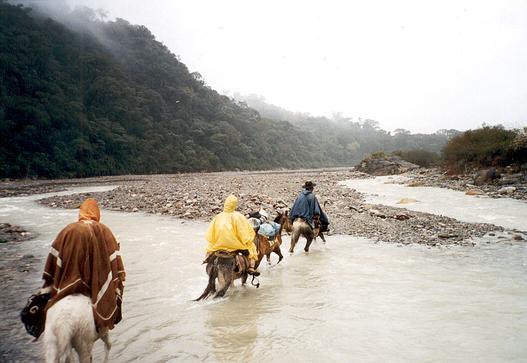The rudimentary stone mills were observed everywhere, not missing in any yard. A group of teenagers laughed at the curiosity that these mills arouse in us. There were so many types and sizes that it was really necessary to stop to look at each of them, with constant amazement.
The day had dawned, and we were with our horses by the riverbed. A tractor with a high trailer had arrived in Matancillas coming along the downstream river the previous evening; it brought materials for the school and helped locals move around the area. The tractor rode on a rough path that meets the river numerous times. It tows a high trailer, which was necessary to keep water from reaching the people and things it transported through the frequent river crossings. At noon, the tractor passed us, loaded with people and merchandise, and with its purring engine it rode down the river in search of Isla de Cañas.
We passed the narrow of Aguas Calientes. To the north, a brook of warm waters lent its name to this place so full of greenery. Shortly afterwards, a large expanse of riverbed opened in front of us. Here, the river channel was so ample that we could securely estimate it to be at least 700 or 800 meters wide in this area.
We had reached Monoyoc, a place of great ravines where the locals bring their animals in winter to graze in the absence of grass in the arid highlands. The beauty of the place left us amazed. A great glen opened to our left towards the North, then after crossing the Abra de Monoyoc, descending to the sources of the Pescado, another important river in the great Bermejo basin.
A large esplanade allowed the settlement of the Monoyoc estate, a modest house made of large boards, with countless birds and monkeys stunning with their characteristic songs and squeaks, hiding among the large trees of the place. Here lived Don Eustaquio Mamaní and his wife, though they were currently absent. We observed a large corral made of dry-seated stones and numerous horses that enjoy this paradise at ease.






